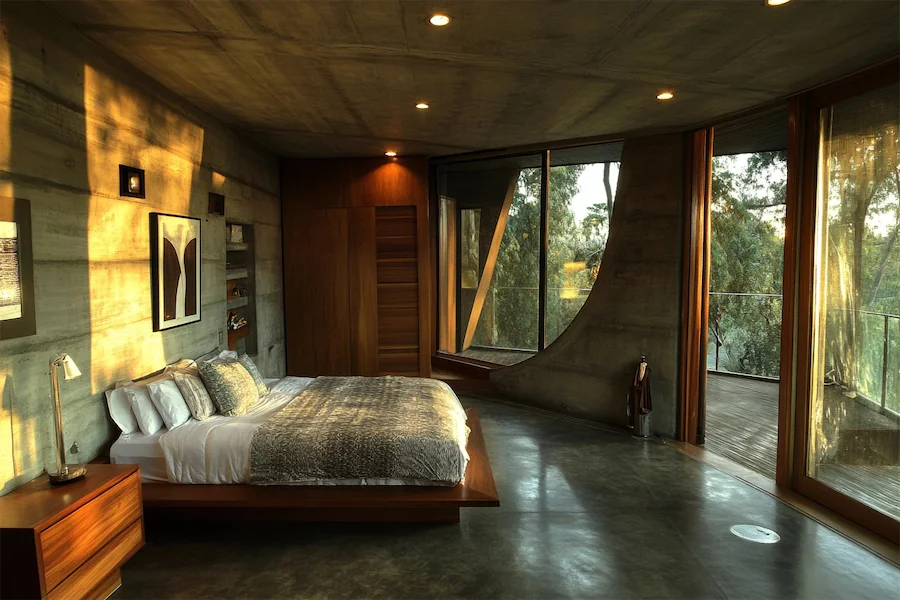Designing an architectural bedroom involves integrating structural elements and design principles to create a space that is both functional and aesthetically pleasing.
Key Features of an Architectural Bedroom
- Structural Elements as Design Features: Exposed beams, columns, or unique ceiling designs can serve as focal points, adding character and depth to the room.
- Spatial Planning: Thoughtful layout and use of space ensure functionality and comfort, with attention to flow and proportion.
- Natural Light Utilization: Incorporating large windows or skylights maximizes natural light, enhancing the room’s ambiance and connection to the outdoors.
- Material Selection: Using high-quality materials such as wood, stone, or metal adds texture and a sense of permanence to the design.
- Integrated Storage Solutions: Built-in wardrobes and shelving maintain a clean and uncluttered appearance, contributing to the room’s architectural integrity.
Applications of Architectural Design in Bedrooms
- Modern Minimalist: Sleek lines, open spaces, and minimal decor emphasize the room’s architectural features, creating a serene environment.
- Industrial Style: Exposed brick walls, metal accents, and utilitarian design elements reflect an industrial aesthetic, highlighting the building’s structure.
- Traditional Elegance: Incorporating classic architectural details such as crown molding, wainscoting, or coffered ceilings adds sophistication and timeless appeal.
Considerations When Designing an Architectural Bedroom
- Cohesiveness: Ensure that architectural elements align with the overall design theme of the home for a harmonious aesthetic.
- Functionality: Balance design with practicality, ensuring that the space meets the occupant’s needs without compromising on style.
- Personalization: Incorporate elements that reflect personal taste and lifestyle, making the space uniquely yours.
Conclusion
An architectural bedroom thoughtfully combines structural design elements with personal style, resulting in a space that is both functional and visually engaging. By focusing on spatial planning, material selection, and cohesive design, you can create a bedroom that serves as a comfortable and inspiring retreat.
